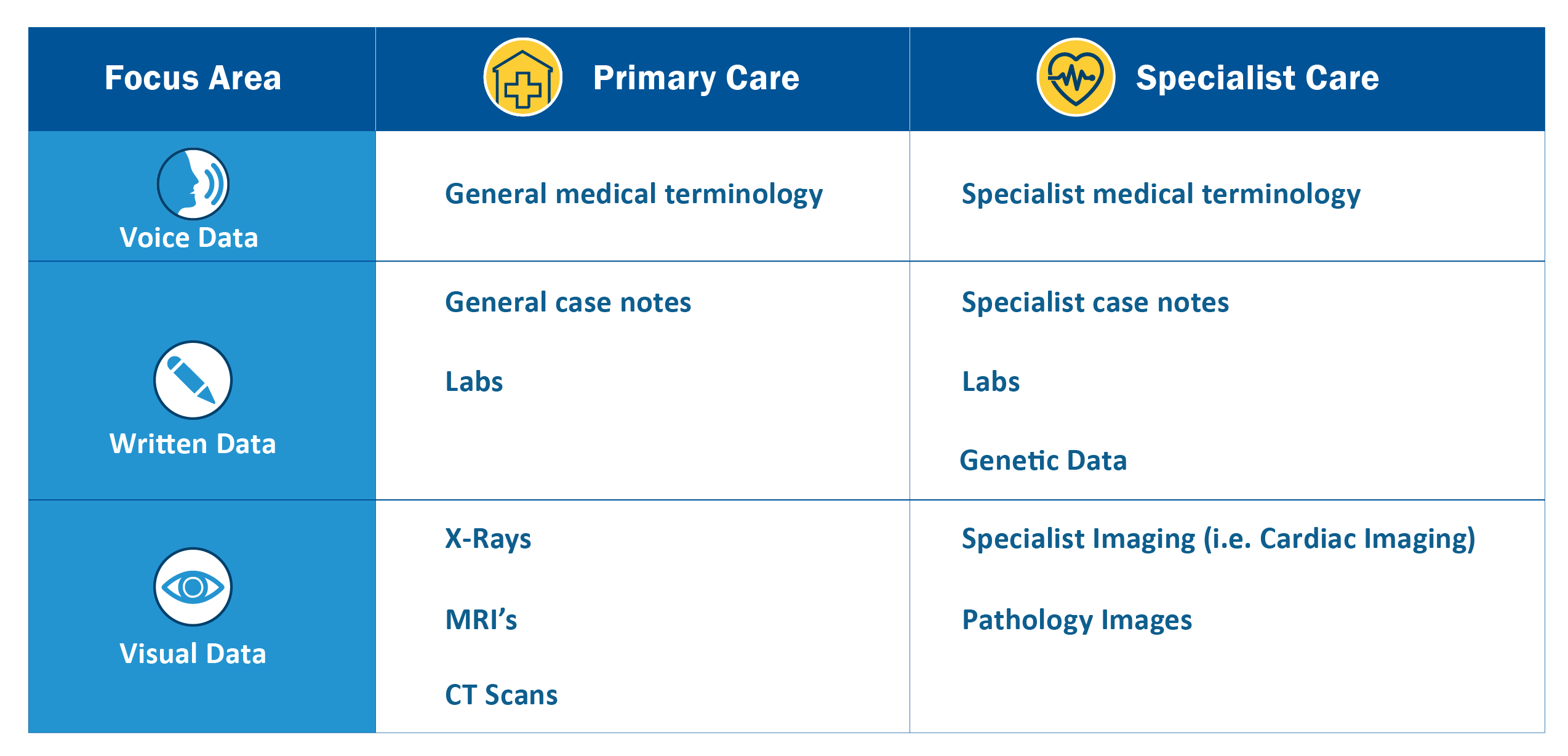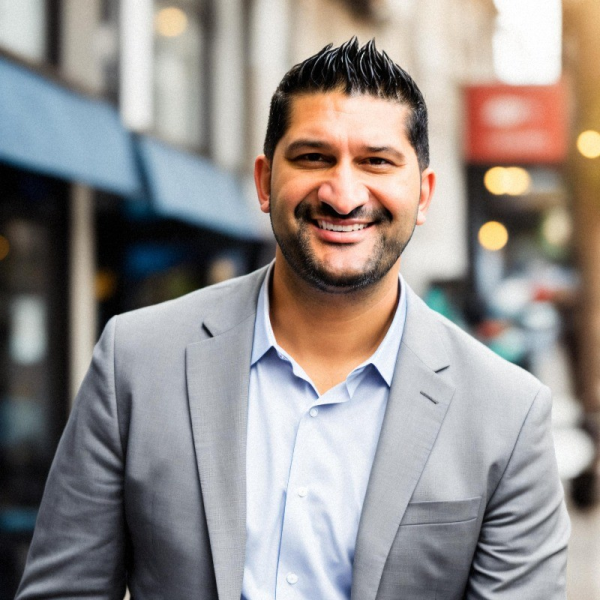- Jump Around
- Individuals Interviewed
Not long ago, Ambient Scribing was heralded as a breakthrough—a technology poised to free physicians from the tyranny of their keyboards, restoring their focus to the patient rather than the screen. The headlines were breathless, the demos impressive, the promise seductive: AI-powered scribes would silently document patient encounters, lifting the administrative burden that has long been the scourge of modern medicine.
Within Rubicon’s portfolio, the peak of this hype cycle already feels like a distant memory. A year ago, interest was at its zenith. Now, after rounds of demos and trials, many of our physicians have seen these tools in action. And what’s become clear is that the market is now flooded with new entrants—each promising a more seamless, more intuitive, more game-changing experience.
This influx serves as a stark reminder of a fundamental truth in AI: true product moats are rare. In a field where innovation moves at breakneck speed, differentiation is fleeting, and yesterday’s disruptor is today’s commodity.
Two dominant categories of players are beginning to emerge. Standalone AI agents—independent, vendor-agnostic tools designed to integrate across multiple systems—are vying for position against EMR-native solutions, those built directly into electronic medical record platforms. The distinction between these two camps is far from rigid, with some solutions blurring the lines.
The question now is whether any of these players can rise above the fray—not just by delivering a technically impressive solution, but by embedding themselves so deeply into the physician’s workflow that they become indispensable. Because in AI, as in medicine itself, the difference between novelty and necessity makes all the difference.
Ambient Scribing Product Categories: EMR players are a recent entrant
“Ambient Scribes are on the verge of being ready for a physician specialist and we get a high level of interest in these solutions from the Evergreen affiliated nephrologists. Some of the scribes struggle with specialty terminology and workflow. One vendor we demo’ed didn’t pick up a Chronic Kidney Disease related issue in a conversation. But we do see the technology advancing and improving in this area,” says Tim Pflederer, Chief Medical Officer at Evergreen Nephrology.
The scribe offerings appear to be converging around a generally acceptable and usable product – it’s unclear if one platform has achieved true differentiation in the market. If one company has an edge, Ambience AI appears to have created a distinct offering, emphasizing their model’s capacity for edge cases.
HarmonyCares went through a recent Ambience evaluation. Their risk-based documentation suggestions are strong compared to the competitors. They offer good detailed prompting on additions to the note. Most of this technology does well in the typical 4-wall physician office and we are now trying to evaluate how this technology would do in our home visit setting,” says Jeffrey Stevens, Chief Medical Information Officer at HarmonyCares.
“When exploring scribing solutions, we need to take into account the unique needs and nuances of pediatric populations and ensure that the model incorporates accurate measures and information that is specific to our model and the children we serve,” says Eden Klein, Chief Technology Officer at Imagine Pediatrics.
“We are getting strong adoption across specialties and subspecialties within health systems. And ambient scribing is just part of the value we are delivering. We are serving customer needs in care coordination and revenue cycle today,” says Michael Ng, Co-Founder and CEO at Ambience.
Across conversations with AI vendors — one issue keeps surfacing: training set limitations.
Some vendors hesitate to deploy their models in specialist settings, citing concerns that their training data skews too heavily toward primary care. Others, by contrast, insist their models are robust enough to serve both primary care physicians (PCPs) and specialists, despite clear differences in the way these two groups document and interpret medical data.
At the heart of the debate is a fundamental question: Are AI models truly universal, or do their training sets inherently restrict their capabilities?
On paper, many vendors claim their models can seamlessly transition between PCPs and specialists. But in practice, the underlying datasets tell a different story—one where a model trained predominantly on generalist encounters may struggle with the nuanced language, diagnostic complexity, and workflow idiosyncrasies of specialty care.
The tension speaks to a larger reality in AI-driven healthcare: a model is only as good as the data that shaped it. And until vendors acknowledge the limits of their training sets, the promise of a one-size-fits-all AI solution may remain just that—a promise, rather than a reality.
Training Data: The difference between Specialists and Generalists may have an impact

The entrance of EMR vendors into this space as another interesting development, with Athena taking a notably distinctive approach: allowing users to pick an ambient scribe from 3 different vendor options (including Suki and Abridge).
US Heart & Vascular “USHV,” a Rubicon portfolio company and cardiology physician practice management platform, is an eCW user and has been evaluating their new scribe Sunoh.
“We opted to implement eClinicalWorks (eCW) as our unified EHR platform and for us its essential that AI-driven tools are deeply embedded within the EHR. eCW has taken a unique approach - investing in and developing these capabilities in-house with their Sunoh.ai ambient listening scribe. We are also excited to deploy their healow Genie AI-powered patient engagement platform,” said Irfan Ali, Chief Information Officer at USHV.
“We offer Suki Assistant, a full featured AI assistant that handles a wide breadth of tasks from documentation to coding to patient summaries for health systems and clinics looking to help their clinicians save time; we also offer our AI engine, Suki Platform, to technology companies looking to add AI experiences to their solutions. We’re proud to partner with EHRs, including Athena, telehealth organizations like Zoom, clinician communications companies, and more to power their AI experiences,” says Punit Singh Soni, Founder and CEO at Suki.
Use cases in specialties and care management are driving continued feature development in Ambient Scribing, for example:
- Specialist Care Orders: If the Ambient Scribe could generate orders for a specialist based off a conversational situation that would be a huge unlock.
“When vendors can automate the generation of orders in the EMR that will be an order of magnitude improvement in terms of time saved by the specialist physician. You can do the work of a visit in the course of a conversation,” says Tim Pflederer, Chief Medical Officer at Evergreen Nephrology.
- Care Management: Ambient scribes have been focused on physicians, but in value-based care settings, the care manager becomes an integral part of care delivery infrastructure. In response, companies like Innovaccer are developing an ambient scribe for care managers.
“AI in healthcare isn’t just about efficiency; it’s about ensuring every interaction between care teams and patients translates into better health outcomes. InScribe for care managers is designed to do just that—bridging technology with compassion to meet the unique needs of value-based care. This is just the beginning. As we expand our AI capabilities, we’re introducing a suite of new copilots and intelligent agents tailored for care management, risk stratification, and quality improvement,” says Sandeep Gupta, Co-Founder and COO at Innovaccer.
In our next Episode we’ll review the Rubicon Portfolio Experience in Risk Stratification!
Disclaimer: The use of AI in healthcare is nascent and evolving rapidly. Views expressed in this paper are based on preliminary findings and analysis. The long-term benefit of the impact of AI in both the healthcare industry and any investments made by Rubicon Founders will be determined over many years or decades. Additionally, any real impacts will likely occur after much research and development time and cost, and not all projects will achieve positive return on investment.
Individuals Interviewed for this Article
Rubicon Portfolio Companies
 Jason Foucher, Chief Product Officer, Indigo
Jason Foucher, Chief Product Officer, Indigo Eden Klein, Chief Technology Officer, Imagine Pediatrics
Eden Klein, Chief Technology Officer, Imagine Pediatrics Meghan Haycraft, Co-Founder & Chief Strategy Officer, Imagine Pediatrics
Meghan Haycraft, Co-Founder & Chief Strategy Officer, Imagine Pediatrics Sonnie Linebarger, CEO, Cadre Hospice
Sonnie Linebarger, CEO, Cadre Hospice Ron Margalit, Chief Information Officer, Evergreen Nephrology
Ron Margalit, Chief Information Officer, Evergreen Nephrology Tim Pflederer, Chief Medical Officer, Evergreen Nephrology
Tim Pflederer, Chief Medical Officer, Evergreen Nephrology Joe Lucero, Vice President of Risk Adjustment, Honest Health
Joe Lucero, Vice President of Risk Adjustment, Honest Health Jeffrey Stevens, Chief Medical Information Officer, HarmonyCares
Jeffrey Stevens, Chief Medical Information Officer, HarmonyCares Bartley Bryt, Chief Medical Officer, Privia Health
Bartley Bryt, Chief Medical Officer, Privia Health Irfan Ali, Chief Information Officer, US Heart and Vascular
Irfan Ali, Chief Information Officer, US Heart and Vascular
AI Technology Vendors
 Fawad Butt, CEO, Penguin Ai
Fawad Butt, CEO, Penguin Ai Ronen Lavi, CEO, Navina
Ronen Lavi, CEO, Navina Jay Ackerman, CEO, Reveleer
Jay Ackerman, CEO, Reveleer Michael Ng, Co-Founder and CEO, Ambience Healthcare
Michael Ng, Co-Founder and CEO, Ambience Healthcare Sandeep Gupta, Co-Founder and COO, Innovaccer
Sandeep Gupta, Co-Founder and COO, Innovaccer Severence MacLaughlin, CEO and Co-Founder, Delorean AI
Severence MacLaughlin, CEO and Co-Founder, Delorean AI Punit Singh Soni, Founder and CEO, Suki
Punit Singh Soni, Founder and CEO, Suki






